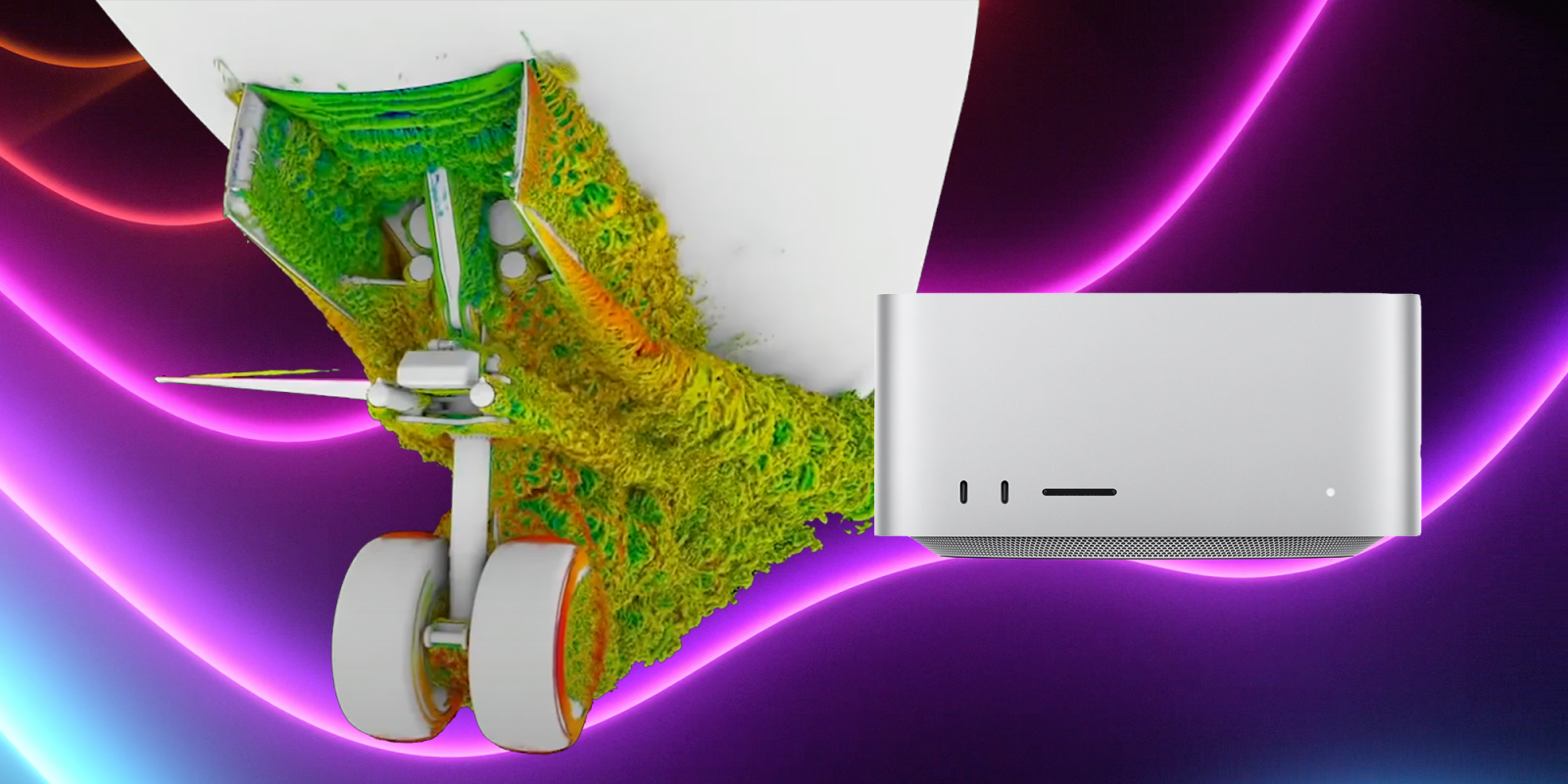
On March 8, Apple announced its newest Mac family member, the Mac Studio. Using the company’s latest System on a Chip called the M1 Ultra, Apple used NASA‘s TetrUSS software to see just how powerful it is.
First rumored by 9to5Mac to be released just a few days ago, Apple’s Mac Studio is a professional-focused computer priced between the Mac mini and Mac Pro starting at $1,999. Inside, you can use one of Apple’s two high-end chips, the M1 Max with 10 CPU cores, 24 GPU cores, and a 16 core neural engine, or the M1 Ultra, which is two Max chips combined.
Since Apple’s entrance to the desktop and laptop silicon lineup in 2020, the company has touted its performance versus other desktop processors. To show off the M1 Ultra and that the chip is designed for the professional rather than the average user, Apple used NASA’s TetrUSS Computational Fluid Dynamics Software as a benchmark.
The most awarded software in the history of NASA, TetrUSS is a suite of computer programs used for fluid dynamics and aerodynamics analysis and design. The software is widely used in other government organizations, the aerospace industry, academia, and non-aerospace industries such as automotive, bio-medical, and civil engineering.
via NASA
Just like you would expect, combining two powerful processors inside a single machine almost doubles the performance when compared to the M1 Max.

Apple’s new Mac Studio and the Studio Display are available to order on the Apple website, but prepare to wait a while before getting them as the Mac Studio’s expected arrival times are already in April.
Enjoy reading Space Explored?
Help others find us by following on Apple News and Google News. Be sure to check us out on YouTube, Twitter, Facebook, and Instagram, join our Discord!
FTC: We use income earning auto affiliate links. More.

Comments